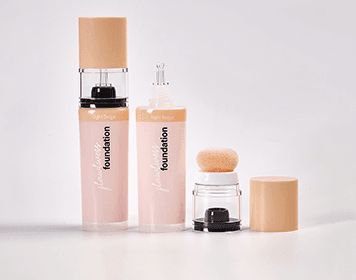Menu
Menu
Menu

Inflation is a persistent economic phenomenon that affects industries worldwide, and the plastic tube manufacturing sector is no exception. For ASME Packaging Co., Ltd (ASME), understanding how inflation impacts raw material costs is crucial for maintaining profitability and delivering quality products to customers. This article delves into the effects of inflation on raw material costs, particularly focusing on the plastic tube industry, and provides insights into how companies like ASME can navigate these challenges.
Inflation refers to the general rise in prices of goods and services over time. For manufacturers, this often translates into increased costs for raw materials, labor, and transportation. In the case of plastic tubes, raw materials such as polyethylene (PE), polypropylene (PP), and polyvinyl chloride (PVC) are heavily impacted by inflation. These materials are derived from petroleum, which is highly sensitive to global economic conditions and fluctuating oil prices.
When inflation rises, the cost of petroleum-based products also increases, leading to a direct impact on the price of raw materials used in plastic tube production. ASME, as a leading manufacturer, must adapt to these changes to remain competitive while ensuring product quality.
ASME has implemented several strategies to mitigate the impact of inflation on raw material costs. By leveraging advanced procurement techniques and fostering strong supplier relationships, the company ensures a steady supply of quality materials at competitive prices. Additionally, ASME invests in research and development to explore alternative materials and production methods that reduce dependency on petroleum-based plastics.

Another key strategy is optimizing production processes to minimize waste and improve efficiency. By adopting energy-efficient machinery and streamlining workflows, ASME can offset some of the cost increases associated with inflation.
The plastic tube industry is evolving rapidly, with manufacturers adapting to economic pressures and shifting consumer demands. One prominent trend is the growing focus on sustainability. As inflation drives up the cost of traditional raw materials, many companies are exploring bio-based plastics and recycled materials as alternatives. These options not only reduce costs but also align with environmental goals.
For ASME, staying ahead of industry trends is vital. The company is actively researching sustainable packaging solutions to meet the needs of eco-conscious consumers while maintaining affordability. This aligns with the broader industry shift toward greener practices, which is becoming increasingly important in the face of inflationary pressures.
Inflation inevitably affects the pricing of finished products. For ASME, this means carefully balancing cost increases with customer expectations. While raising prices may be necessary to offset higher raw material costs, the company prioritizes transparency and communication with clients to maintain trust and loyalty.
Moreover, ASME focuses on value-added services, such as customizable designs and efficient delivery systems, to justify price adjustments. By enhancing the overall customer experience, the company ensures continued demand for its plastic tubes despite inflationary challenges.
As inflation persists, the plastic tube industry must adapt to changing economic conditions. Companies like ASME are well-positioned to thrive by embracing innovation and sustainability. The adoption of advanced manufacturing technologies, such as automation and AI-driven processes, will further enhance efficiency and reduce costs.
Additionally, the shift toward circular economy principles—where materials are reused and recycled—offers significant potential for cost savings. ASME is already exploring these opportunities to ensure long-term resilience in the face of inflation.
Inflation presents significant challenges for the plastic tube industry, particularly in terms of raw material costs. However, companies like ASME Packaging Co., Ltd are demonstrating resilience through strategic planning, innovation, and a commitment to sustainability. By staying ahead of industry trends and investing in efficient production methods, ASME is well-equipped to navigate inflationary pressures while continuing to deliver high-quality products to its customers.
As the industry evolves, the importance of adaptability and forward-thinking strategies cannot be overstated. For ASME and other manufacturers, these qualities will be key to overcoming inflation-related challenges and driving future growth.
Tags:Hand Cream Tube Packaging,cosmetic tube packaging,cosmetic tube packaging price,eco-friendly packaging